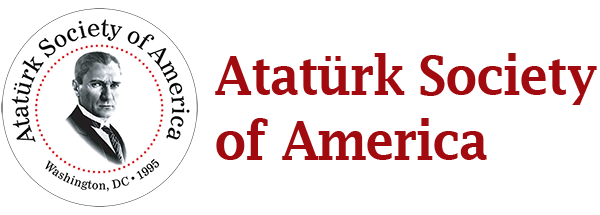In the lives of nations, leaders have played key roles in the success and prosperity of their countries. Thus, it is important to study effective leadership styles. One of the most popular leadership styles is called “transformational leadership.” It is defined as the ability to develop a shared vision, culture, and the means that enables the transformation of a social entity (e.g., group, organization, and nation) from a current state to a visionary state by inspiring their followers to maximize their contributions for the betterment of the social unit. I will analyze Mustafa Kemal Atatűrk as a transformational leaders to demonstrate his effective leadership style. His transformational leadership qualities can be defined as follows:
Atatűrk as a nation builder: Throughout history, there have been numerous leaders and national heroes. However, Atatűrk emerges not only as a military hero, but also as a nation builder.
In general, the role of leadership is considered as a function of a leader’s personality, his/her relationships with the followers, and contextual situation in which s/he emerges. To understand Atatűrk’s leadership qualities, one needs to assess his evolution and accomplishments from a historical perspective and within the context of his time. The qualities of Atatűrk can be briefly defined as a genius, liberator, founder, and man of Enlightenment. To combine all these qualities in one person is exceptional.
Thus, to appreciate Atatűrk’s accomplishments and reforms, his personal qualities, his relations with his followers, and the situations in which he has risen to lead need to be considered.
Atatűrk’s Personality
Atatűrk was a visionary leader with extraordinary goals for his followers and country. He was an achievement-oriented person with great ambitions of making his country reaching a level of modern civilization. He was smart, inquisitive, fearless, determined, and most importantly a reformist. After finishing his Military Academy with distinction, as a young military officer, he accepted and completed difficult assignments during the decline of the Ottoman Empire. Inspired by the French Revolution, Atatűrk wanted to bring radical changes to his deteriorated country in the late Ottoman period. His revolutionary thoughts included the establishment of a secular and modern Turkish Republic in the place of the Ottoman Empire against the all the odds at that time.
Atatűrk was not only a thinker, but also a man of action. In addition to being a successful military commander, he was a skillful political leader. As a commander, he undertook difficult assignments in Gallipoli, Çanakkale and Sakarya battles, then as a political leader, he served as the first president of Republic of Turkey during the transformation of the nation. Atatűrk started his journey to Samsun on May 19, 1919 with an idea of launching independence war against the Allied nations (grand military powers at that time) and their ally Greece despite the Sultan’s opposition.
Atatűrk’s Relations with his Followers
Atatűrk was a masterful thinker and communicator. He not only held a great vision, but also communicated it to his people. He was able to reach out to ordinary people like soldiers, religious leaders, villagers, and artisans. He successfully shared his beliefs, objectives, and reforms with his followers and persuaded his people. For example, Atay notes once Atatűrk decided on some major reforms, he consulted with his favorite Hoca Raşit Efendi, the Head of Religious Affairs (Diyanet İsleri Reisi). If a persuasion of Hoca Raşit is needed, for further consultation Atatűrk referred him to General Fevzi Çakmak, the Chief of Staff (Meraşal) who held strong Islamic beliefs.
He selected his friends carefully, but trusted them. Close associates of Atatürk respected him truly and were loyal to him all the way. Such names in his close network as İsmet İnonü, prime minister, Fevzi Çakmak, the chief of staff, and Kazım Özalp, the defense minister, were always supportive his leadership while he provided an opportunity to his followers to carry out their joint ideals and supported them to realize their competencies.
Although some critics of Atatürk claim he engaged in an authoritarian leadership, it is disputable whether he could have been successful if he acted otherwise. His leadership style allowed him to make quick decisions and implement measures determinedly and immediately. There was no time for consensus building given the adverse conditions that existed then in Turkey.
The Situational Factors
The third factor that contributes to the leadership phenomenon is the situation in which a leader arises, grasps those unfavorable environmental conditions, and seeks solutions out of deteriorated circumstances. At that time, a large part of the country was occupied by Allied nations and Greece. In addition, the Ottoman government in Istanbul had lost its connection with its people and lost their support, the Sultan’s leadership and government in Istanbul were helpless, economic and social conditions were depressed, and most importantly the Turkish people were insulted and in despair. The Sultan’s government, a theocratic dictatorship, was trying to buy time to survive by submitting itself to the Allied forces. In addition to the vacuum of political power, the country lacked infrastructure, having only primitive roads, railroads, and harbors, practically no capital, banking systems, foreign investments or entrepreneurs.
In these conditions, Atatűrk unified, inspired, and persuaded people in joining him to realize his dream of establishing a new Turkish Republic, and adopting major reforms that would drastically transform the nation. He achieved all of his objectives with the support of his inner circle of friends and most importantly with the support of his people. He built enthusiasm, courage, self-confidence, and most importantly a hope for his followers so that they fought along with him despite all of the unfavorable conditions. In this way, he emerged as a savior and national hero.
The leadership of Atatűrk can be explained in terms of transformational leadership characteristics.
Creating a vision. Atatürk created a vision of an independent and modern Turkish Republic, which will pair up with its Western counterparts. This vision had led his government and people being a driving force over the years. The ultimate target was in his words “modern civilization,” which meant a continuous progress.
Mounting mutual gains: Atatürk unselfishly worked for his ideals and accomplished many of them during his short lifetime. His followers and people benefited from them enormously. By changing the Turkish alphabet from Arabic script to Latin script, he made easier for people become literate. Because of a new alphabet campaign that he personally launched, the literacy rate of Turks had increased tremendously. As part of adoption of new laws providing women equal rights with men, Turkish women gained suffrage even before some western countries including Switzerland. In addition to a new constitution for the young Turkish Republic, new legislations were enacted, adopting Civil Code based on Switzerland’s civil code, Commerce Code based on Germany’s commerce code, and Penal Code based on Italy’s Penal Code. Such Westernization of the legal system had profound impact on the social and economic conditions tremendously.
Communicating and inspiring his followers: The Turkish Parliament under Atatürk’s Presidency adopted many reforms. Atatürk personally pursued the applications of all these reforms. He set a role model for his followers so that other political leaders and administrators worked tirelessly for the accomplishment of new policies ranging building new schools to creating new state economic enterprises. He had numerous tours to various cities to find out how people feel about and react to his reforms, and then communicated the peoples’ concerns to the government.
Influencing values, beliefs, and culture: Probably the most notable accomplishment of Atatürk was his ability in changing the existing beliefs and values in the society. It was extremely difficult to change old beliefs in a traditional society like Turkey, which ruled over more than 600 years with a dictatorship with deep-seated Islamic values. Then Atatürk, as a transformational leader, established a secular republican state by abolished the theocratic monarchy, Caliphate. Moreover, he launched numerous reforms including the emancipation of women in the male-dominant society; the adoption of Western clothing in the place of traditional Middle Eastern clothes; the adoption of a new alphabet with Latin script and a new Gregorian calendar in the place of Muslim Julian calendar; and the enacting of Western style laws governing from family to commerce in the place of the Sheria, Islamic law. Only Atatürk was able to do all in an amazingly a short-period of time.
Preparing his followers: From the early days, Atatürk realized that all movement of revolution could only be achieved with the help of supporters by negotiating, persuading, and at times contradicting with them even though he later had some major differences with a few of them.
Building personal ties with his followers: Atatürk discussed many of internal and external political matters at his dinner table. He invited numerous pertinent friends and experts to exchange views, to learn from them, and test some new ideas at such dinners. It provided an opportunity to communicate one’s views to the most powerful person of the nation while to learn Atatürk’s opinions and thoughts on various controversial matters.
Accomplishing breakthroughs: Obviously, the most notable breakthrough was the formation of a new force and the win of the Independence War against the Alliance forces and Greece. However, equally or may be more important accomplishment was the establishment of modern Turkish Republic on the ruins of the old empire and the replacements of many laws and regulations of backward society by a series of reforms including major changes in political, legal, social, cultural, and economic fields.
Of the reforms, the most important one was the establishment of secular republican system by abolishing the sultanate and the Caliphate and westernization of legal system and society with a new constitution and series other laws mentioned above. It was a very bold step to establish a secular state in a traditional and religious society. In the new secular regime, the state affairs and religious affairs were separated. All backward religious schools (medreses) and lodges (tekkes) were closed down and a modern educational system was introduced. Concomitantly, the legal provisions concerning the emancipation of Turkish women entitled the women with equal rights with men (e.g., ending divorcing at the husband’s discretion, giving equal inheritance rights as those of men, entering occupations in education, medicine, law, and public services).
The following example illustrates well his determination in accomplishing his reforms. In 1928, Atatürk formed a committee in Ankara to make recommendations in adopting the Latin alphabet with Turkish phonetics. The committee after long deliberations recommended that the change to the Latin alphabet should be done gradually in five years. Atatürk, on the other hand, decided that it would be done in three months. The whole nation switched into the Latin alphabet in that period by using only new scripts.
Atatürk adopted the policy of “Peace at Home and Peace in the World.” He inspired the leaders of other Muslim and developing countries. It is interesting to note that his former enemy, but new ally, the Prime Minister of Greece, Venizelos nominated Atatürk for the Nobel Peace Award. This only happens for an extraordinary person.
Conclusion
The review of Atatürk’s leadership style and accomplishments obviously proves that he was a transformational leader. Previously many historians, political scientists, and sociologists attested this fact in different ways. Not only his people, but also the world leaders at his time and later have admired his accomplishments.
Only transformational leaders with great visions, inspirations, strong personalities and behaviors, determinations, and competencies can accomplish grand reforms. Atatűrk had demonstrated all those features aptly. Studying Atatűrk as a transformational leader provides invaluable insights into effective leadership, from which I hope current and future leaders in Turkey and beyond learn important lessons.
Atay, F.R. 1969. Çankaya. İstanbul, Doğan Kardeş Matbaacılık Sanyii A.Ş.
Kinross, L. 1964. Atatürk: The rebirth of a nation.Rustem & Brothers
Mango, A. 2006. Interview with A bibliographer, Andrew Mango. Voice of Atatürk, Spring. 14-15.
Mango, A. 2000. Atatürk, The Biography of the Founder of Modern Turkey. New York: Overlook Press.
* Refik Çulpan is professor of management at the Pennsylvania State University at Harrisburg. His email is rculpan@psu.edu

